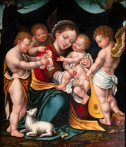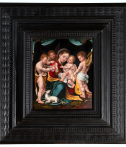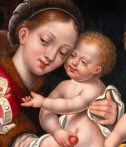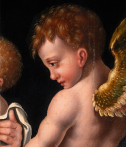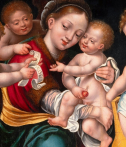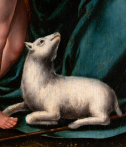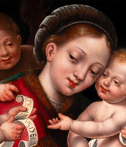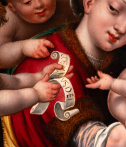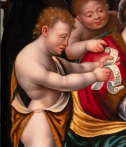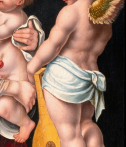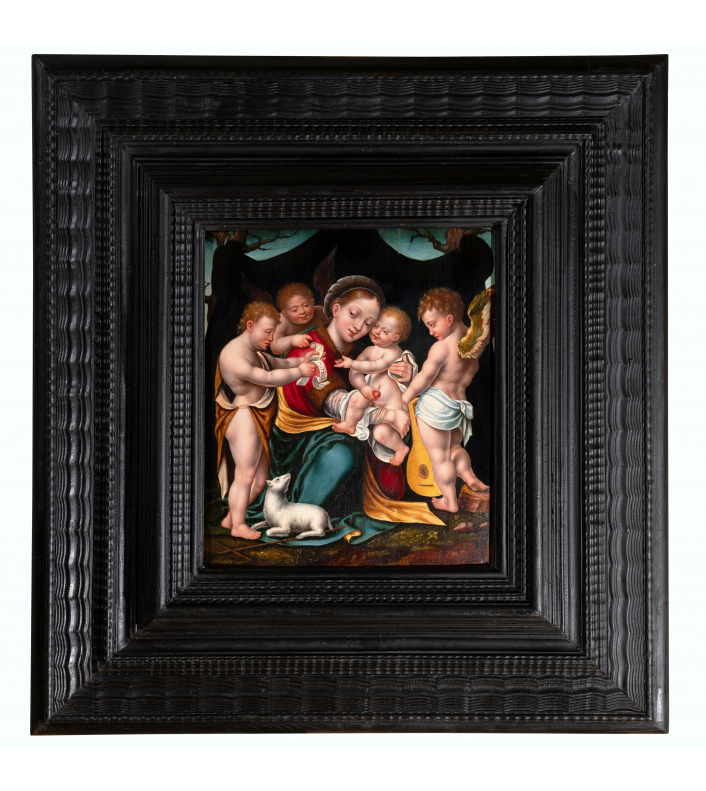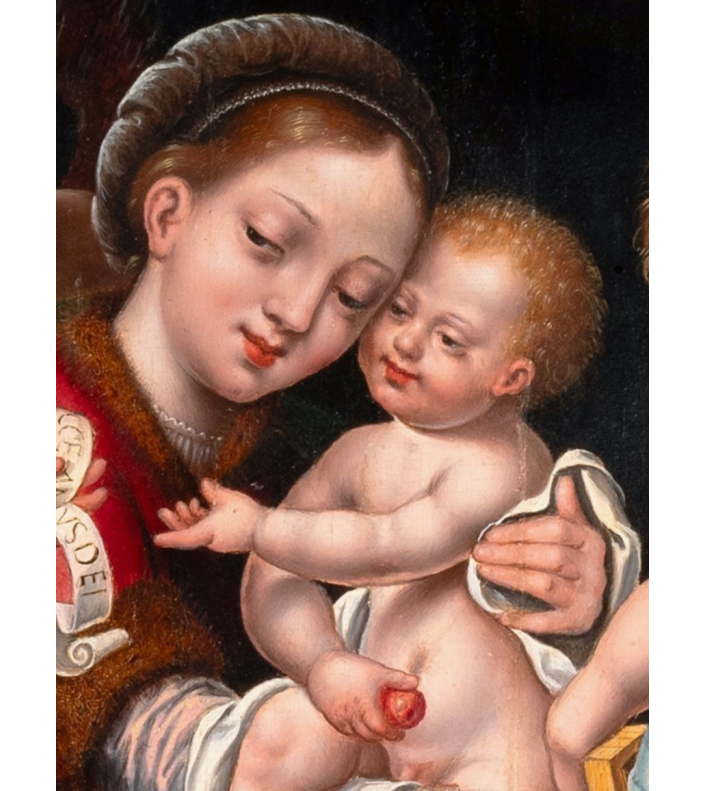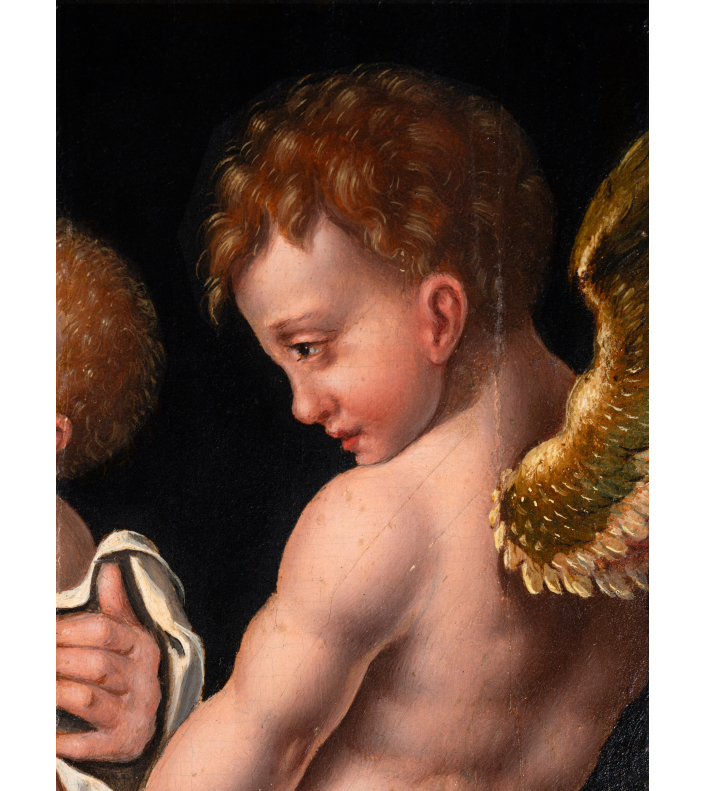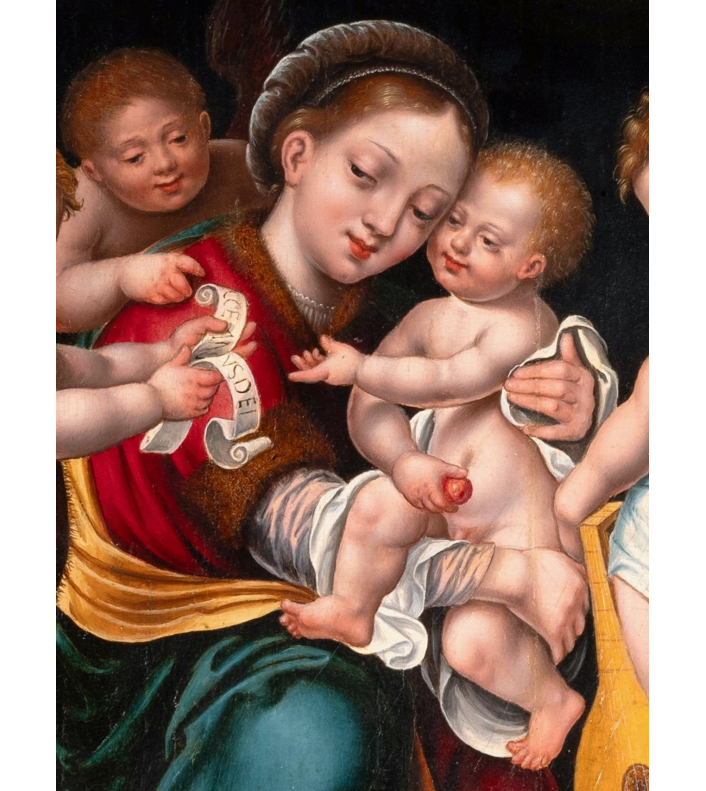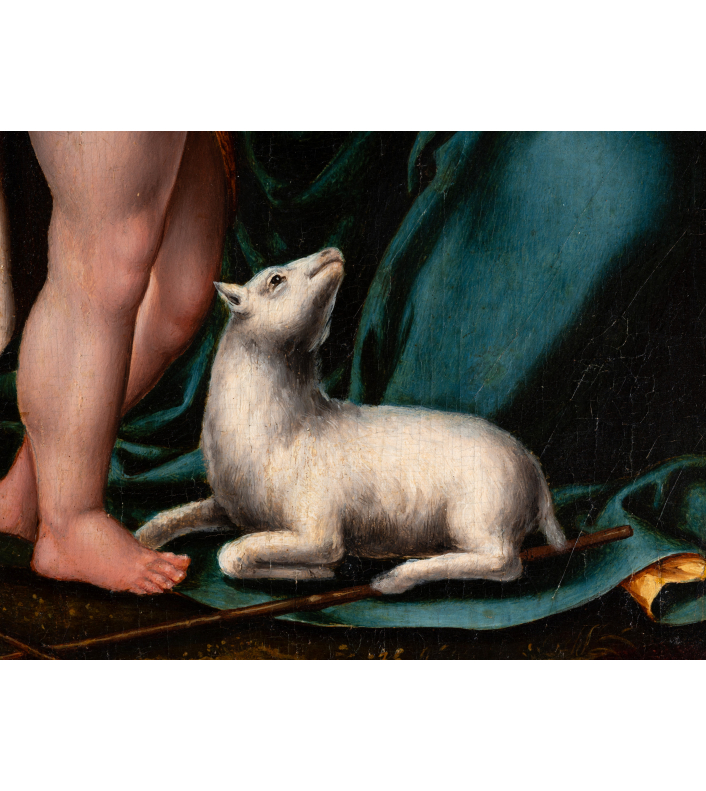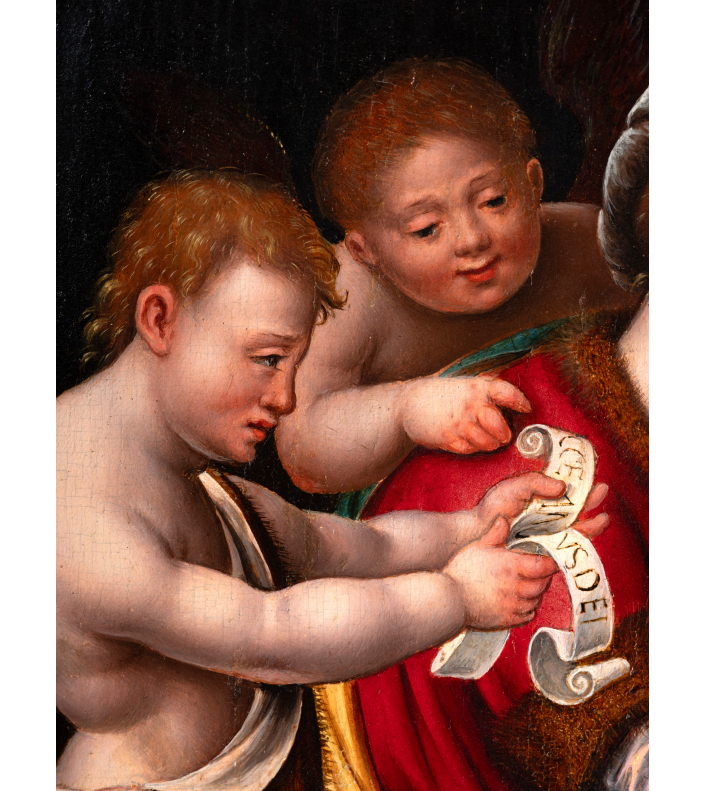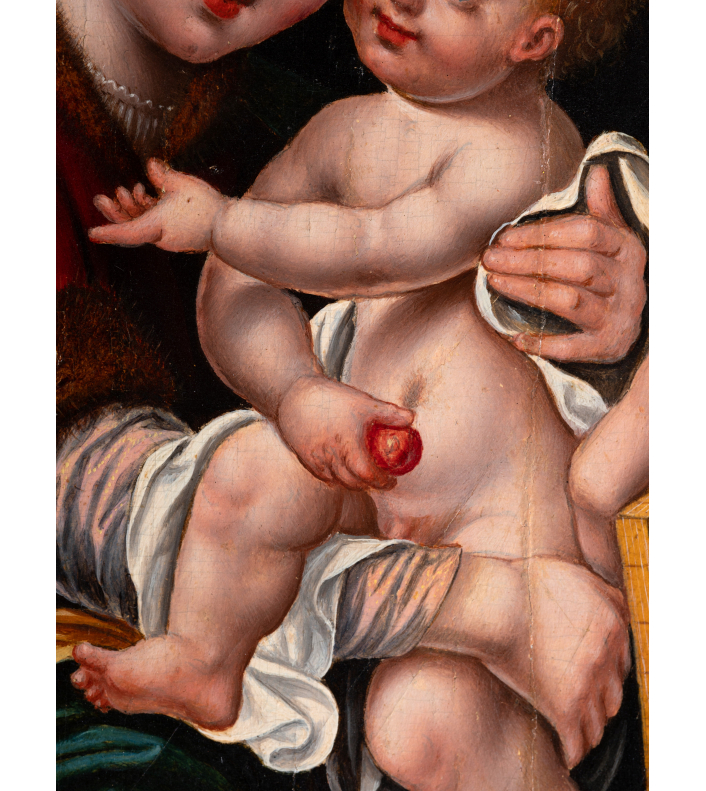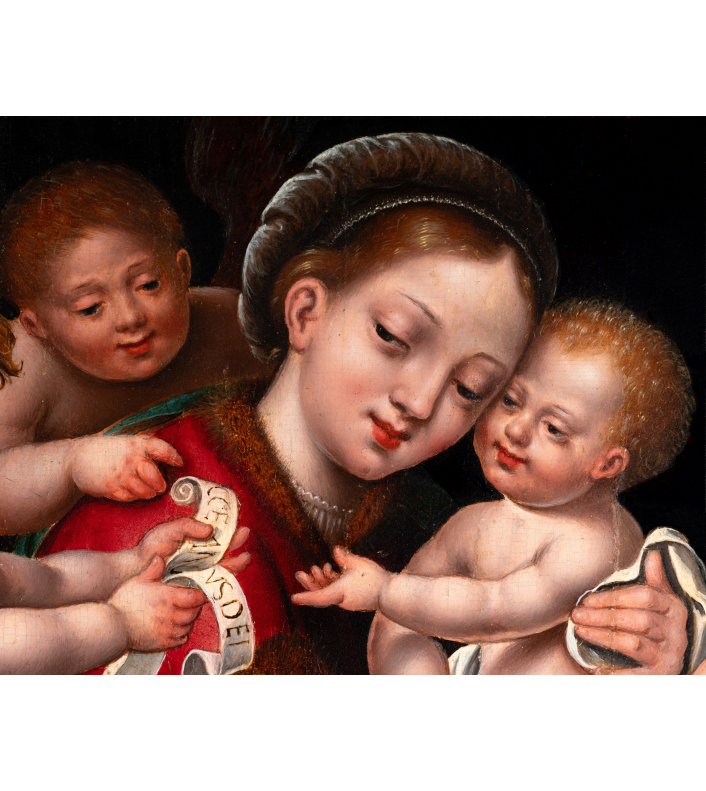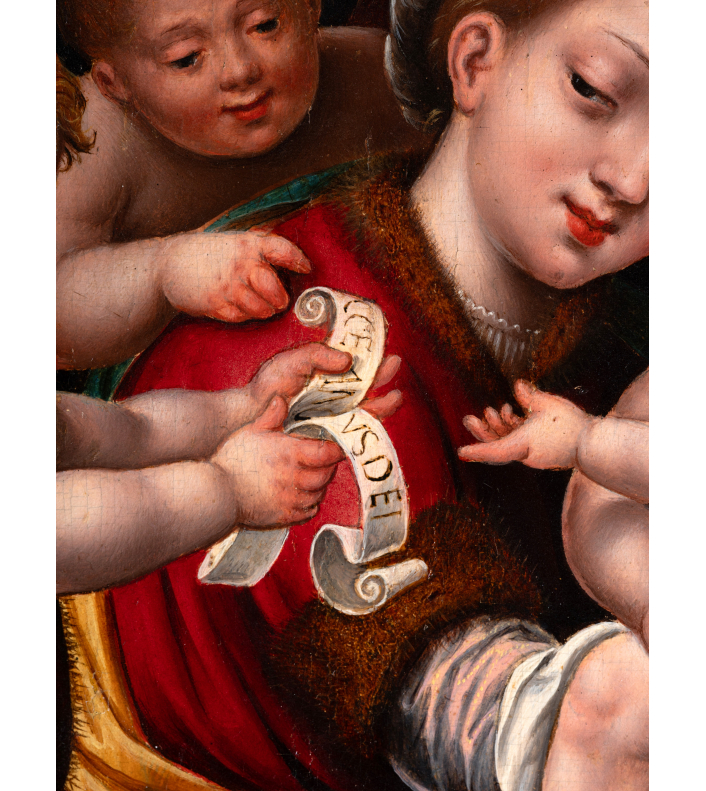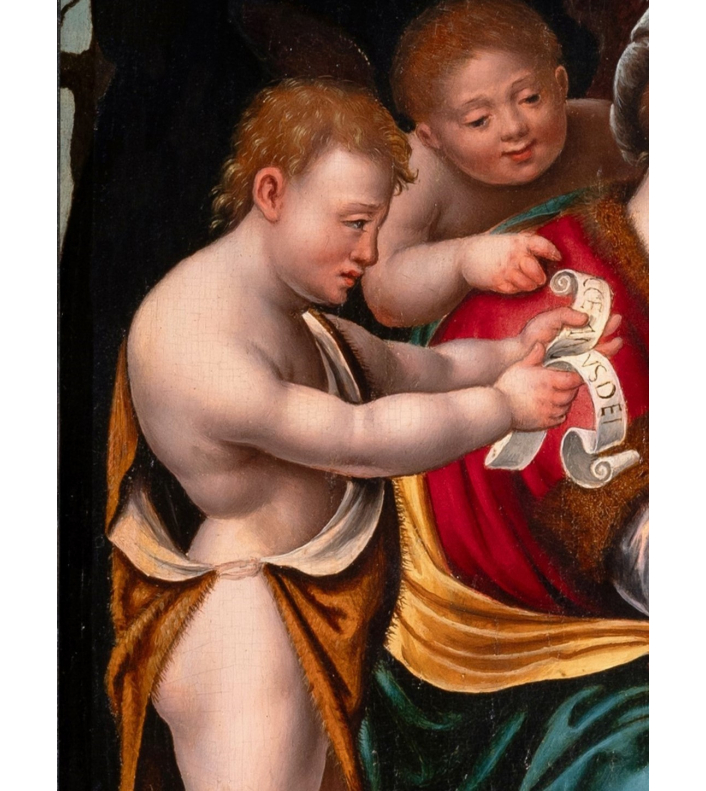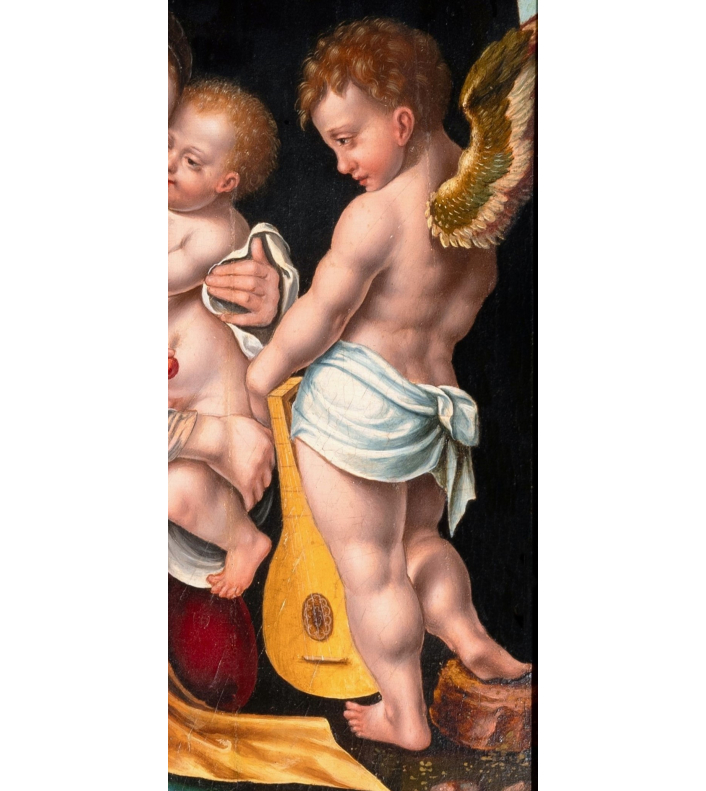Madonna and Child with Saint John the Baptist and angels
Circle of Joos Van Cleve (1485 – 1541)
16th century Antwerp school
Oil on oak panel
Dimensions: h. 32 cm, w. 28.5 cm
Moulded, blackened and guilloché wooden frame with inverted profile
Framed: h. 64 cm, w. 61 cm
This touching and intimate composition depicts the Virgin and Jesus surrounded by St John the Baptist and two cherubs. Against the background of a black canopy stretched between the trees and obscuring the landscape, the two angels gather around the Virgin, Jesus and Sai John the Baptist.
Placed in the middle of the composition, the Virgin and Child focus all the attention and attract the eye. Their central positioning dominates the delicately chubby figures of the cherubs, whose turned or tilted heads, body movements and arm gestures direct our eyes towards the divine couple. The Virgin is distinguished from the other figures by the fresh and saturated colours of her clothes: blue coat with yellow lapels, red dress with fur-lined sleeves and collar. Marie stands out with her face with its incredibly gentle features. In a gesture full of affection, she presses her cheek against that of her son, who is held on her knee. The Virgin, with her modestly lowered eyes, nevertheless remains melancholy, eager to preserve her Son from his tragic fate.
Little Saint John wears a camel's skin, recalling his life of penance and preacher in the desert. John the Baptist hands Jesus a phylactery on which are inscribed the prophetic words "ECCE AGNUS DEI" ("Behold the Lamb of God"), thus announcing the destiny of Christ, who will be sacrificed as a lamb. Jesus, supported on the Virgin's lap, smiled as he reached for the banner, having already understood the necessity of the sacrifice. In his left hand he holds a small red apple (symbol of original sin). The little lamb, with its head turned towards Jesus, is lying on the mantle at the feet of the Virgin, with the reed cross at his side.
Our work captivates with the delicacy of the models, the refinement of the palette with intense colors, the precision of the drawing, a fine brush that shades the strands of the hair or magnifies the wings of the angels. The effect of contrasting flesh with the darkened background is characteristic of Joos van Cleve's works, with the divine light illuminating only the figures. The resulting lighting creates shadows, revealing the chubby bodies of little cherubs. The charm of the scene and its infinitely intimate effect, intensified by the tight framing, accentuates the proximity to the work. The small format indicates an object of private devotion, easily transportable, leaving an opportunity to meditate when travelling. The suave tenderness in the postures of the Child and the Virgin is meant to move the viewer.
Related works :
• Artcurial Auction, Paris, 13 novembre 2018, (h. 32 cm, l. 28,5 cm)
• Veilinghuis Loeckx Auction, Ghent, Belgium, 24 November 2015 (h.43, l.32 cm )
Our work is inspired by the Corsini Madonna by the Florentine Andrea del Sarto, executed between 1513 and 1514, the original of which is now lost.
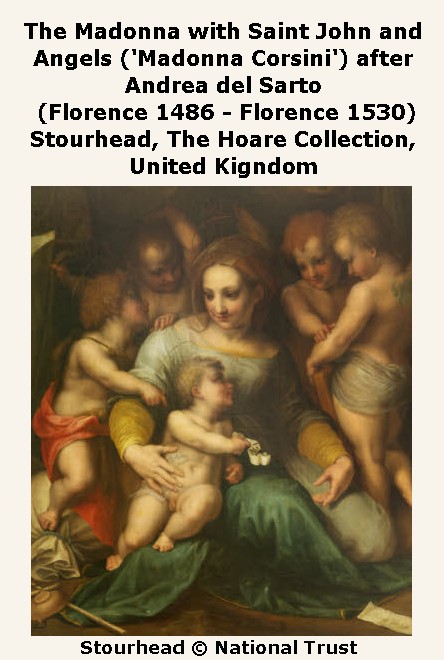
Many Nordic artists were seduced by the work of Italian Renaissance artists and sought to emulate their style. Among them was Joos van Cleve, one of the leaders of Antwerp painting in the first half of the sixteenth century.
Although there is no known version painted by Joos Van Cleve of this subject, his son Cornelis Van Cleve has repeatedly painted the replica of del Sarto's lost work (Dorotheum Auction, Vienna, 17/10/2017, and Chrysler Museum of Art, USA).
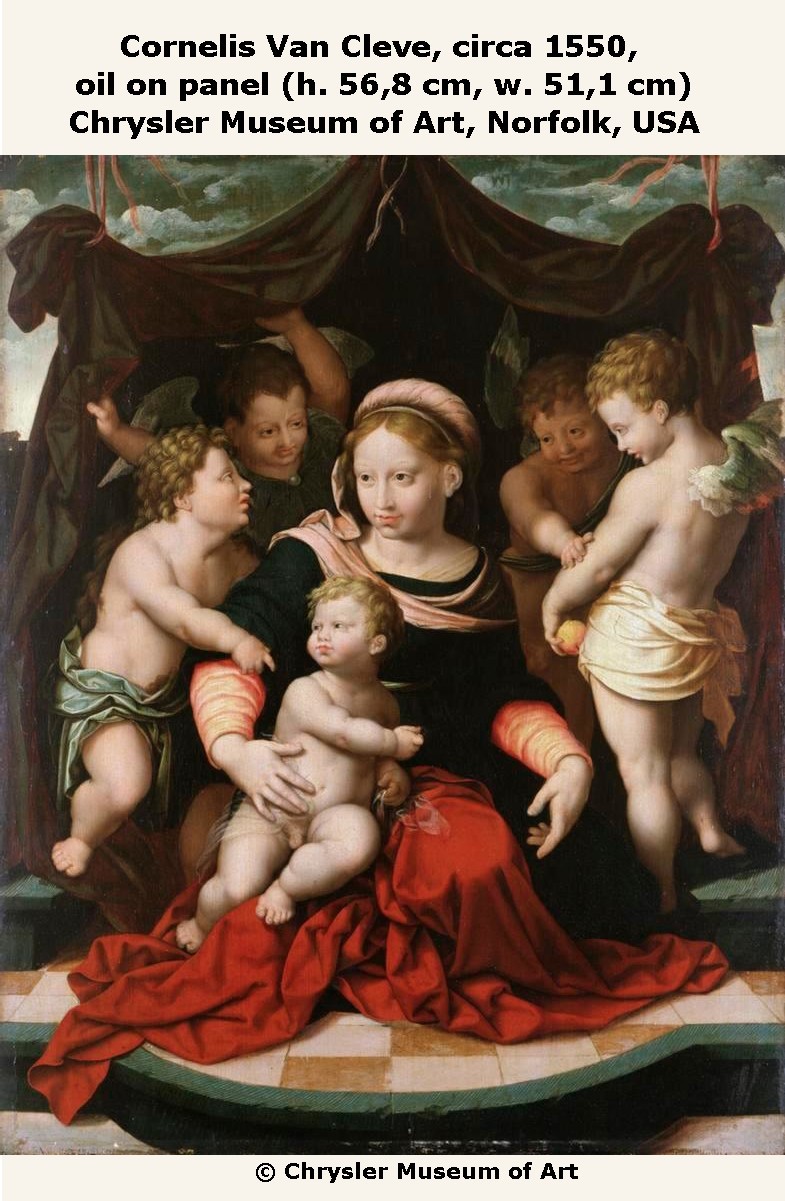
Working in his father's studio, it is possible that he became acquainted with the subject through the copies of Sarto made by Joos Can Cleve.
The characteristic elements of Joos Van Cleve's works: the proximity created between the figures, the tight framing, but above all the contrasts between the dark backgrounds and the illuminated flesh, all present in our painting, point us towards a painter in his immediate circle, who undoubtedly worked in the master's studio and rubbed shoulders with Cornelis van Cleve.
The gentleness and closeness of the little angels is reminiscent of Joos van Cleve's composition "The Child Jesus and Saint John the Baptist Children Kiss", circa 1525-1530, known through autograph variants and studio replicas. (e.g. Museum of Fine Arts, Antwerp).
The rounded face of the virgin with the large, slightly swollen lowered eyelids is very similar to the face of the virgin in Joos Van Cleve's studio (sale Sotheby's London, 07/12/2007).
Joos van Cleve
actif 1505/1508 - 1540/1541
A leading painter, active in Antwerp from his arrival around 1511 until his death in 1540 or 1541, he combined the traditional techniques of the Flemish primitives with influences from more contemporary Flemish Renaissance painting styles The exact date and place of birth of Joos van Cleve (aka Joos van der Beke) are unknown, it is presumed to have originated in Cleves or the vicinity of this German city on the banks of the Rhine. He was probably born around 1485, as it is assumed that he entered the workshop of Jan Joest around 1505 and participated in the painting of the panels of the high altar of the church of St. Nicholas in the town of Kalkar in the Lower Rhineland. Joos van Cleve emigrated to Antwerp, possibly via Bruges, and in 1511 he was accepted as a free master in the Guild of St. Luke in Antwerp. In 1519, 1520 and 1525 he was co-deacon of the guild and appears on the list of pupils presenting in 1516, 1523, 1535 and 1536.
Joos van Cleve's skills as a portrait painter earned him a summons to the court of Francis I of France where he painted the king, queen and other members of the court. Joos is not documented in Antwerp between 1529 and 1534, and it is quite possible that he stayed in France and possibly in Italy during this period.


